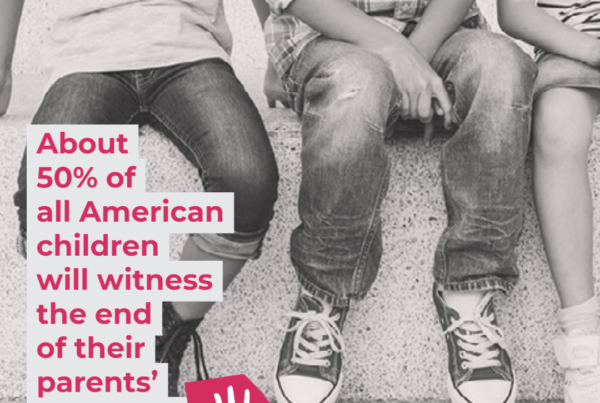Divorce is on the uptick, but as the stigma declines the challenges for coparents never stop. Based on more than 30 years of experience, here is insight from Roberta Eisen about factors that have influenced trends in modern divorce:
- A post global pandemic culture has become a factor in the increasing divorce rates around the world. Families that did not have a healthy, reliable, and consistent baseline could not weather the distress of isolation, anxiety and depression that came along with Covid. Quarantining took a toll on everyone, but especially those living in unhealthy relationships who were unable to find a way to regulate during this difficult time.
- The changes in support guidelines have also influenced our trends in increasing divorces rates. As far back as the late 1990s, many jurisdictions began to connect the number of overnights to the amount of money that one parent has to pay the other parent. As soon as we linked children to money or money to the children, children became compromised in their care. This is something we are actively looking to combat and reform through our work at the D.C. Children’s Institute.
- The stigma that had been associated with the word divorce has decreased every year. With divorce happening every at a rate of 50% in our country based on data from the CDC, the shame that was previously associated with divorce is now mostly a moot point. Divorce can still carry a religious burden. For example, couples married in the Jewish or Catholic faith may need religious divorces along with their legal divorces. Interfaith marriages, which are on the rise, complicate matters even more.
- Divorce can create very complicated, complex, and sometimes confusing situations, especially for children of divorce. Increasing gender and sexual fluidity, along with the hormones and emotions that come with childhood and adolescence prompt kids to identify earlier and try to gain some control and normalcy over their family lives, when things seem to be going all over the place. Along with the normal stressors of adolescence and teenage years, these personal changes on the part of the parents and the children impact everyone in the family.
- Roles and guidelines in family structure have shifted and become more flexible. Many men now stay home as primary caregivers while many women pay alimony and support to the other parent to compensate for their financial inequalities and differences following divorce. Men in 2023 can take over any household chores and women are becoming more empowered personally and professionally. The stratified gender roles of the family unit from the 1950s-80s are no longer set in the stone the way they once were. The power shift in male-female relationships continues to shift, and as such plays a role in the divorce process.
Obviously, every case is unique and all families are different in their own way. However, based on years of working one-on-one with families and children, these are a few of the trends I’ve seen that show divorce in 2023 is at a different stage than any previous time in U.S. history.
To learn more about services as Eisen Blackstone Group, visit our Family Support page. Follow us on Facebook, Instagram, and LinkedIn for more parenting tips and information about support services for families experiencing transitions.




